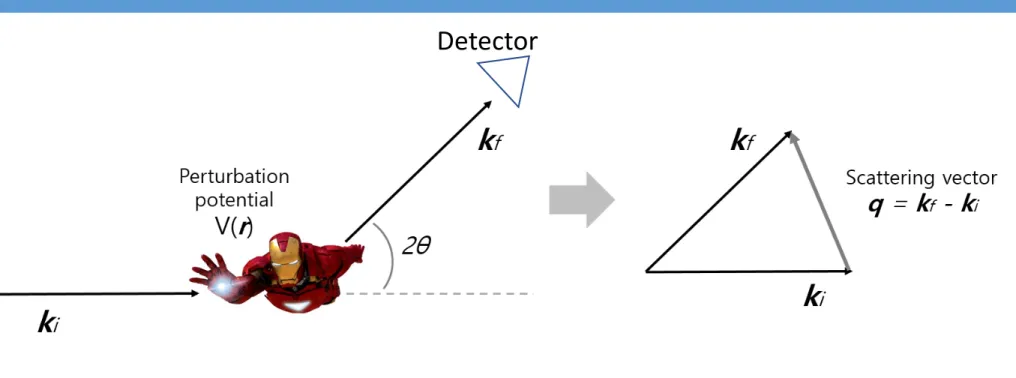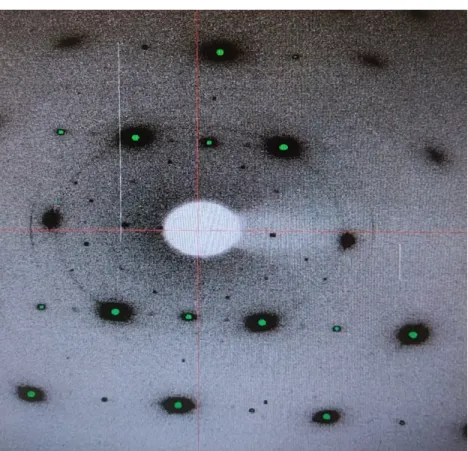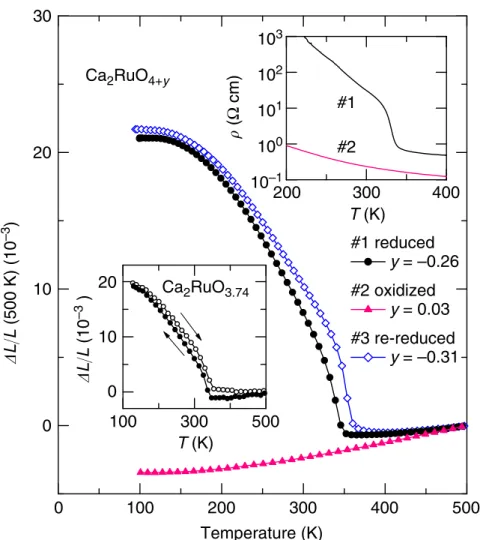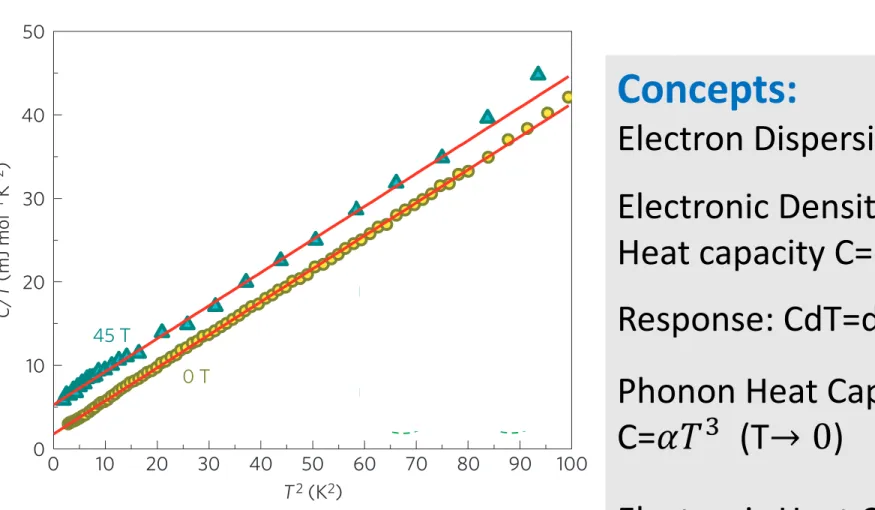Condensed Matter Physics
Vorlesung / Lectures: Monday 09h00 – 11h00
Tuesday 09h00-11h00 Raum / Room: Y36-K-08
https://www.physik.uzh.ch/en/teaching/PHY401/HS2020.html Johan Chang
johan.chang@physik.uzh.ch
Übungen / Exercise class: Tuesday: 11h15 – 13h00 Raum / Room: Y36-K-08
Kevin Kramer
kevin.kramer@uzh.ch
Week Topics
1 Introduction
2 Peierls Instability & CDW order 3 Linear Response theory
4 Magnetism 1: Dia- & Para- magnetism
5 Magnetism 2: Ferro- Anti-Ferro magnetism
7 Correlated Electrons 1: ARPES & Quantum Oscillations 8 Correlated Electrons 2: Mott Physics
9 Correlated Electrons 3: Orbital Physics 10 Superconductivity 1: Landau Theory 11 Superconductivity 2: Vortex Physics 12 Superconductivity 3: Exotic SC
13 Guest lectures 2: Prof. M. Gibert (07.12), Prof. C. Aegeter (13.10) Prof. F. Natterer, Prof. M. Janoschek
Prof. T. Greber
Course Overview Topics
Experimental Cond. Matter.
Guest lectures:
Prof. C. Aegeter (13.10) – Biophysics Prof. M. Gibert (07.12) – Oxide films
Prof. F. Natterer – STM & Single atom magnetism
Prof. M. Janoschek (PSI) – Magnetism & Neutron scattering Prof. T. Greber – Surface science
Prof. J. Osterwalder
Condensed Matter Physics course = 10 ETCS points
30 ETCS points per semester ⟹ 10 ETCS points ≈ 12 hours per week
Practical information
Lectures + Ex. Class Reading / Studying Solve Exercises
6 hours ~3 hours ~3 hours
Proposed work-load distribution
Strategy / Advice
(1) Solve the exercises your self.
(2) Read and study continuously
(3) Be active during the lecture and exercise class
Your task for this week
For next week
(1) Read Kittel – “Peierls Instability of Linear Metals”
Chapter 10 (2) Read notes.
(3) Checkout the exercise sheet on the course webpage.
Chapter 1:
Crystal Structures
Concepts:
Lattice + Basis = crystal structure
Chapter 2:
Crystal Structures Determination
8. Scattering theory & Experiments
Concept 8.0.1 — Fermi Golden Rule. Let’s consider an initial quantum mechanical state y i = | i i and image it is exposed to a potential V ( r ) . Now, we let y f = | f i be an arbitrary final state. The Fermi golden rule (not proven here) allows evaluation of the transition rate – i.e. the transition probability ( | i i ! | f i ) per time
P = 2p
h ¯ | h f | V | i i | 2 d (E f E i ) where h f | V | i i =
Z d ~ ry f V ( ~ r) y i . (8.1)
Here d is the delta-function and E f and E i are the energy of the initial and final states.
Concept 8.0.2 — Elastic Scattering. In a scattering experiment, an incident particle is scattered on an object that is modeled by some potential V ( ~ r) . Let’s assume that the incident and scattered particle can be described by plane waves y µ exp (i ~ k ~ r) . This is correct as long as the particle source and final detector is sufficiently far from the scattering object. In the following, we will consider only elastic scattering. That is, the energy of initial and final state is identical
Figure 8.1: Scattering triangle. (a) Incident particle with momentum ~ k i scattering on an object with a scattering angle defined as 2q . The resulting momentum is defined as ~ k f ( f for final). (b) Another representation of the scattering triangle defining the scattering vector ~ q = ~ k f ~ k i .
Detector
Concepts:
Form & Structure factor
Reciprocal space
3.3 Techniques
Beam alignment: In order to observe the di↵erent Bragg peaks with the point detector, the sample has to be aligned. This is usually done by detecting the di↵raction pattern with the 2D detector. First the sample has to be turned around the high-order axis until a high symmetry plane is found. After noting the position, the sample is mounted in the desired environment, e.g. the cryostat magnet. The previous plane is found again. Then, a Bragg peak has to be chosen and brought into the possible scanning direction (green line on Fig. 3.4 by tilting the sample. Usually, peak splitting is observed best at a high order peak (peaks with high Miller plane indices), but those peaks also tend to be less intensive due to the scattering geometry.
Thus one has to compromise by finding a high order peak that is still intense enough.
Figure 3.4: 2D detector image used for alignment. Non-aligned high symmetry plane of sample inside a magnet. The dark points are Bragg peaks, while the bright circle in the center is the projection of a beam stopper. The green dots inside the dark ones means that the detector is about to be oversaturated. The red line shows the possible scanning direction. The dark circular structures around the beam stopper are powder di↵raction rings coming from the aluminum window.
Superconducting Magnet Crysostat: In order to cool the sample down to temperatures around 3 K, we used the superconducting magnet cryostat shown in Fig. 3.6a). The magnet was also used to produce horizontal magnetic fields of up to 10 T.
Pressure Cell: Our experiment demanded a device which applies hydrostatic pressure on the sample and which is small enough to fit in the magnet cryostat. A pressure cell with the desired dimensions was filled with oil and then used to contain the sample. A hydraulic press as shown in Fig. 3.6b) was used to load the pressure and gave a rough estimate on the pressure inside. To obtain the exact pressure, a special property of the cuprate perovskite material La
2-xBa
xCuO
4was used: By applying pressure on the material, the crystal structure transists from two-fold symmetry to four-fold symmetry [11]. In reciprocal lattice space this correspond to a merging of two Bragg peaks as shown in Fig. 3.5a). The peak splitting q can be mapped to the applied pressure and fitted with a curve as shown in Fig. 3.5b).
In our case, an ! scan was done over the (0 2 0) lattice position (tetragonal notation). The intensity of the Bragg peaks was measured against ! and the data fitted with two Lorenzian functions as shown in Fig. 3.5b. The di↵erence in angle of the two peak positions was then
30
Chapter 2:
Crystal Structures Determination
Single crystal Powder
Bachelor thesis: Nik Dennler
https://www.diamond.ac.uk/industry/Industry-News/Latest- News/Synchrotron-Industry-News-Powder-Diffraction.html
Chapter 3:
Crystal Bindings
Concepts:
Attractive
Repulsive interaction
Binding energy
Chapter 3:
Crystal Bindings – Thermal Expansion
Chapter 3:
Crystal Bindings – Thermal Expansion
Chapter 3:
Crystal Bindings – Negative Thermal Expansion
for Ca
2Ru
0.90Cu
0.10O
4(Cu0.10). Particularly, the Fe-doped ruthenate exhibits
T-linear expansion in almost the entire rangeof
Tbelow 500 K, which is favourable for practical applications.
Thermal expansion exhibits almost
T-linear behaviour, even nearthe lowest temperature (95 K) used for the present dilatometry measurements. Therefore, NTE apparently continues down to the lower temperature. In that case, the total volume change
DV/Vmight become greater than the present estimate of 2.8%
(T
¼95–500 K).
Effects of oxygen deficiency. We can examine the differences
between the present materials showing giant NTE and previous materials. Figure 2 shows linear thermal expansion
DL(T)/Lof reduced (#1), oxidized (#2), and re-reduced (#3) Ca
2RuO
4in the present experiments (see ‘Methods’ section for sample prepara- tion conditions). The giant NTE of the reduced sample is suppressed dramatically by high-pressure oxidizing procedures.
When this oxidized sample is reduced again, the giant NTE is recovered. The results presented above imply that differences in oxygen contents produce a striking difference in thermal- expansion properties. Evaluations of the oxygen contents by thermogravimetric analysis are
y¼ "0.26(1), 0.03(1) and
"
0.31(1), respectively, for the reduced, oxidized and re-reduced samples in the notation of Ca
2RuO
4þy. Reports of an earlier study described that
yfell within the range of
"0.01(1) to
þ0.07(1)
15. The present reduced ruthenates are regarded as having larger amounts of oxygen deficiency than the previous ones. Hereinafter, we use Ca
2Ru
1"xMxO
4þynotation as the present materials. The
yvalues are presented in Table 2.
High-temperature L to low-temperature S phase transition.
The giant NTE of Ca
2RuO
3.74seems to be triggered by the transition from the high-T metallic L phase to the low-T insu- lating S phase. The inset of Fig. 2 presents the temperature dependence of resistivity
r(T) for the reduced and oxidizedCa
2RuO
4þy. The resistivity of the reduced sample indicates that the system undergoes the MI transition at
TMI¼345 K. The onset of NTE is almost identical to this MI transition. In contrast, resistivity of the oxidized sample shows no abrupt change that can be interpreted as prolonged high-T L phase down to lower temperatures. Corresponding to this MI transition, the anomaly appears in the magnetic susceptibility
w(T) (Supplementary Fig. 2).
w(T) is hysteretic (
B10 K). It therefore supports the first-order nature of this phase transition. Such hysteretic beha- viour is confirmed also in the linear thermal expansion. The hysteresis loop was observed in dilatometry measurements (inset of Fig. 2). The onset of NTE is 340 and 355 K on cooling and warming processes, respectively. This loop behaviour is partly attributable to the first-order phase transition. The loop behaviour is reproducible through several successive measure- ments.
Structural characterization of Ca2Ru1"xMxO4þy
. Giant NTE can be considered in terms of its crystal structure. The XRD profiles were refined using Le Bail method by RIETAN-FP
25(Supplementary Figs 3 and 4). The structural parameters such as
Table 1 | Parameters related to negative thermal expansion for recently discovered giant negative thermal-expansion materials.DV/V(%) TNTE(K) DT(K) a (10"6K"1)* Structurew Methodz Reference
ZrW2O8 1.2 o425 425 "9 Cubic D/N 6
Cd(CN)2 2.1 170–375 205 "34 Cubic X 7
Mn3Ga0.7Ge0.3N0.88C0.12 0.5 197–319 122 "18 Cubic D 9
LaFe10.5Co1.0Si1.5 1.1 240–350 110 "26 Cubic D 10
MnCo0.98Cr0.02Ge 3.2 122–332 210 "52 Orthorhombic D 11
SrCu3Fe4O12 0.4 180–250 70 "20 Cubic X 12
Bi0.95La0.05NiO3 2.0 320–380 60 "82 Triclinic D 13
0.4PbTiO3–0.6BiFeO3 2.7 298–923 625 "13 Tetragonal X 14
Pu 5.4 337–480y — — Cubic/Tetragonal D 23
YMn2 4.7 75|| — — Cubic X 24
Parameters of materials with phase transition accompanied by large volume contraction on heating, not broadened, are also listed for comparison.
*Averaged value when the material is anisotropic.
wFor NTE region or lower temperature, larger-volume phase.
zD, dilatometry; N, neutron diffraction; X, X-ray diffraction.
ySuccessive transitions.
||In warming process.
0 100 200 300 400 500
0 10 20 30
Temperature (K)
!L/L (500 K) (10–3 )
Ca2RuO4+y
#1 reduced
#2 oxidized
#3 re-reduced y = –0.26 y = 0.03 y = –0.31
200 300 400
10–1 100 101 102 103
T (K)
" (Ωcm) #1
#2
0 10 20
T (K)
!L/L (10–3 ) Ca2RuO3.74
100 300 500
Figure 2 | Linear thermal expansion DL/Lof Ca2RuO4þy.The data were collected on a warming process using a laser-interference dilatometer.
Reference temperature: 500 K. The hysteresis loop was observed in DL/L measurements using a thermomechanical analyzer for #1 (inset). The giant negative thermal expansion (NTE) of #1 is suppressed by the oxidizing procedure, but is fully recovered by the re-reducing procedure. Inset shows temperature dependence of resistivity r(T) for #1 and #2. The abrupt jump in r(T) at 345 K for #1 corresponds to the Mott metal-to-insulator transition, which coincides with the onset of NTE.
NATURE COMMUNICATIONS | DOI: 10.1038/ncomms14102
ARTICLE
NATURE COMMUNICATIONS| 8:14102 | DOI: 10.1038/ncomms14102 | www.nature.com/naturecommunications 3
ARTICLE
Received 10 Mar 2016 | Accepted 28 Nov 2016 | Published 10 Jan 2017
Colossal negative thermal expansion in reduced layered ruthenate
Koshi Takenaka 1 , Yoshihiko Okamoto 1,2 , Tsubasa Shinoda 1 , Naoyuki Katayama 1 & Yuki Sakai 3
Large negative thermal expansion (NTE) has been discovered during the last decade in materials of various kinds, particularly materials associated with a magnetic, ferroelectric or charge-transfer phase transition. Such NTE materials have attracted considerable attention for use as thermal-expansion compensators. Here, we report the discovery of giant NTE for reduced layered ruthenate. The total volume change related to NTE reaches 6.7% in dilato- metry, a value twice as large as the largest volume change reported to date. We observed a giant negative coefficient of linear thermal expansion a ¼ " 115 # 10 " 6 K " 1 over 200 K interval below 345 K. This dilatometric NTE is too large to be attributable to the crystal- lographic unit-cell volume variation with temperature. The highly anisotropic thermal expansion of the crystal grains might underlie giant bulk NTE via microstructural effects consuming open spaces in the sintered body on heating.
DOI: 10.1038/ncomms14102 OPEN
1 Department of Applied Physics, Nagoya University, Furo-cho, Chikusa-ku, Nagoya 464-8603, Japan. 2 Institute for Advanced Research, Nagoya University, Furo-cho, Chikusa-ku, Nagoya 464-8601, Japan. 3 Kanagawa Academy of Science and Technology, KSP, 3-2-1 Sakado, Takatsu-ku, Kawasaki 213-0012, Japan.
Correspondence and requests for materials should be addressed to K.T. (email: takenaka@nuap.nagoya-u.ac.jp).
NATURE COMMUNICATIONS | 8:14102 | DOI: 10.1038/ncomms14102 | www.nature.com/naturecommunications 1
Chapter 4:
Lattice Vibrations - Phonons
Concepts:
Phonon modes
Transverse and Longitudinal modes
Discrete wave numbers k
Chapter 5:
Lattice Vibrations – Heat Capacity
Concepts:
Density of states DOS Heat capacity C=dU/dT Response: CdT=dU
Phonon Heat Capacity
C=𝛼𝑇 % (T→ 0)
Chapter 6:
Free Electron Gas– Heat Capacity
ARTICLES NATURE PHYSICS DOI: 10.1038/NPHYS1921
30 35 40 45
¬2 0 2
¬2 0 2
¬2 0 2
¬2 0 2
H (T)
∆C p (mJ mol¬1 K¬1 ) ∆C p (mJ mol¬1 K¬1)
∆Cp (mJ mol¬1 K¬1)
5.5 K
~3 K 2 K 1 K I
II
III
IV 1
2 3 4 5
6 32 34 36 38 40 42 44
Temperature (K)
¬1.60
¬1.30
¬1.10
¬0.85
¬0.60
¬0.36
¬0.11 0.140.39 0.630.88 1.101.40 1.60
H (T) 1.6
0.8 0
¬0.830
34 38 H (T)
42
46 6 5 4 3 Tempera
ture (K)
2 1 0
a
c
b
Figure 2 | Oscillatory component of electronic specific heat. a, Equation (1) for a single 531 ± 3 T pocket with warping of 15.2 ± 0.5 T. Note the location of the node depends only on m
⇤. For YBCO 6.56, we find m
⇤= 1.34 ± 0.06 m
e. b, Oscillatory component of data (circles) with the a fit superimposed (black lines). Blue/cyan data at 1 K result from sweeping the magnetic field up/down and show no hysteresis. The dashed line demonstrates the ⇡ -phase shift between 2 K and 5.5 K. c, Temperature-field plot of a, with coloured lines indicating locations of the data shown in b.
For a two-dimensional Fermi liquid with parabolic bands, in which the density of states is constant, the total electronic contribution to the specific heat is a simple sum over each piece or pocket of the Fermi surface:
total
=
0X
i
n
im
i⇤/ m
e(2) where n is the number (multiplicity) of the ith-type of pocket in the first Brillouin zone (BZ), m
i⇤is the effective mass of the ith-type of pocket, and
0= 1.46 mJ mol
1K
2. (A similar expression holds for Dirac-like dispersion with an appropriate redefinition of m
⇤; see Supplementary Information.) Within the scenario in which the high-field resistive state is interpreted as a normal state Fermi liquid, a single pocket in the first BZ (n = 1; m
⇤= 1 . 35 m
e) would yield
total
= 1.9 mJ mol
1K
2and a single pocket per CuO
2plane (that is n = 2; m
⇤= 1 . 35 m
e) would yield
total= 3 . 8 mJ mol
1K
2. The symmetry of the BZ admits only two possibilities for a single pocket, both of which are shown in the upper left of Fig. 3. Among other scenarios, it has been proposed that the high-field resistive state in underdoped YBCO is a spin density wave with a Fermi surface reconstruction (lower right inset of Fig. 3), where there is one pocket per CuO
2plane centred at ( ± ⇡; 0)(0; ± ⇡) with m
⇤= 1 . 35 m
eand two pockets at (⇡/2; ⇡/2) with m
⇤= 3.8 m
e(ref. 3) which would yield
total= 26 mJ mol
1K
2(see Supplementary Information).
Interestingly, this simple Fermi surface pocket counting scheme works well in the case of overdoped Tl
2Ba
2CuO
6+(T
c= 10 K), where transport quantum oscillations experiments found a single frequency with an effective mass of m
⇤= 4 . 9 m
e, predicting of 7 . 2 mJ mol
1K
2(ref. 27). Specific heat measurements made on overdoped Tl
2Ba
2CuO
6+with T
c= 10 K have indeed independently determined ⇡ 7 mJ mol
1K
2(ref. 28). In the underdoped YBCO measurements reported here, the observed value of = 1 . 85 mJ mol
1K
2in Fig. 1 is too small to be consistent with the Fermi surface reconstruction scenario suggested from early quantum oscillation measurements
2,3. The persistence of
0 10 20 30 40 50 60 70 80 90 100
0 10 20 30 40 50
C/T (mJ mol¬1 K¬2 )
T2 (K2) 45 T
0 T (0, 0)
(π, π)



